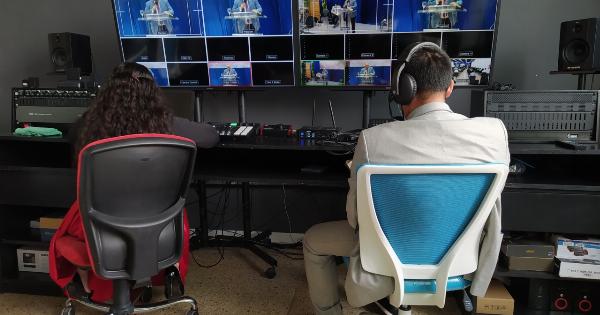State with strikes & feminine sensual bliss.
What are Strikes?
Strikes are a collective action taken by a group of workers in order to protest against their employers. This action involves workers refusing to work until their demands are met.
Strikes can take different forms, such as work stoppages, slowdowns, or occupation of the workplace. They are often used as a negotiation tool to bring attention to grievances and improve working conditions or wages.
The Purpose of Strikes
Strikes serve as a way for workers to have their voices heard and exercise their rights. They are a means to achieve change and create better working environments.
Strikes can also be seen as a way to challenge the power dynamics between employers and employees, as workers can exert pressure on their employers through their collective action.
Types of Strikes
There are various types of strikes that can be carried out by workers to convey their message effectively:.
1. Sit-down Strikes: Workers occupy the workplace and refuse to work until their demands are met.
2. Wildcat Strikes: These are unauthorized strikes that occur without prior notice or approval from the union.
3. Sympathy Strikes: Workers in one industry or sector go on strike to support workers in a different industry or sector.
4. General Strikes: These involve workers from multiple sectors or industries. The purpose is to bring an entire city or country to a halt in order to demand change on a broader scale.
5. Slowdown Strikes: Workers intentionally decrease their pace of work without completely stopping production.
6. Token Strikes: These serve as symbolic gestures of protest and are typically shorter in duration.
Effects of Strikes
Strikes can have both positive and negative effects, depending on the perspective of the stakeholders involved:.
1. Workers: Strikes provide workers with a platform to express their concerns and negotiate better conditions, wages, and benefits.
2. Employers: Strikes can disrupt business operations, leading to financial losses and potential damage to the company’s reputation.
3. Consumers: If strikes affect the production or distribution of goods and services, consumers may experience inconvenience or delays in accessing essential products or services.
4. Economy: Widespread or prolonged strikes can have an impact on the economy, particularly in industries critical to the country’s infrastructure or export capabilities.
Strikes and Feminine Sensual Bliss
While strikes primarily focus on workplace issues, they also indirectly relate to feminine sensual bliss. Feminine sensual bliss encompasses the concept of women embracing and celebrating their sensuality, desires, and pleasure.
It emphasizes the importance of women’s sexual empowerment, self-expression, and freedom from societal constraints.
Challenging Gender Norms
Strikes not only challenge power dynamics in the workplace but also provide an opportunity to challenge traditional gender norms and expectations.
Historically, strikes have predominantly involved male-dominated industries, with women’s voices and concerns often overlooked.
However, in recent times, women have been at the forefront of numerous strikes, advocating for gender equality, fair treatment, and improved working conditions.
Women have used strikes as a means to demand equal pay, combat workplace harassment and discrimination, and secure maternity benefits.
Strikes and Sexual Liberation
Strikes can also be seen as a reflection of women’s sexual liberation.
By participating in strikes and demanding their rights, women assert their autonomy and challenge societal norms that have traditionally repressed their femininity and sexual desires. Strikes become a powerful tool for women to reclaim their bodies and establish control over their own lives.
Embracing Sensuality through Solidarity
Strikes often involve collective action and solidarity among workers. In the context of strikes and feminine sensual bliss, this solidarity can extend beyond workplace issues to encompass the celebration of women’s sensuality.
By standing together, women can create an environment that embraces sensuality and supports the exploration of desires, pleasure, and bodily autonomy.
Challenges and Opposition
Like any movement challenging societal norms, strikes advocating for feminine sensual bliss face opposition and backlash.
Critics may dismiss such strikes as distractions from the core issues or question the appropriateness of blending sensuality with workplace demands.
However, it is important to recognize that strikes are a form of expression and empowerment. Women have the right to fight for fair treatment, equal opportunities, and acknowledgment of their sensuality, desires, and pleasure.
Strikes and Intersectionality
It is crucial to acknowledge the intersectionality of strikes and feminine sensual bliss. Women experience overlapping forms of discrimination and oppression based on factors such as race, ethnicity, class, sexual orientation, and gender identity.
Strikes aiming to empower women’s sensuality must embrace an intersectional approach, ensuring that the voices and experiences of all women are acknowledged and included in the conversation.
Conclusion
Strikes serve as a powerful means for workers to demand change and improve working conditions. While primarily associated with workplace issues, strikes can also pave the way for women’s sexual empowerment and reclaiming of their sensuality.
By challenging gender norms and celebrating femininity, strikes uphold the principles of feminine sensual bliss and seek to create a world where women are free to express their desires, pleasures, and autonomy.































